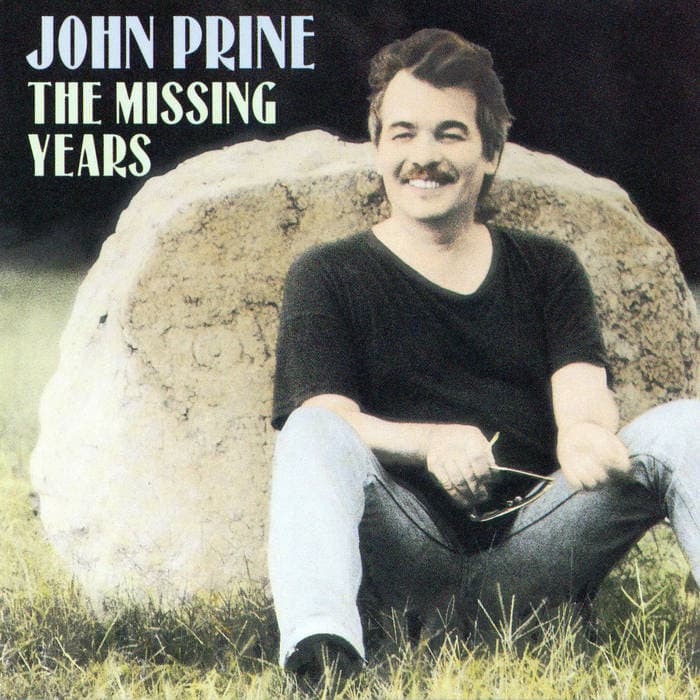
A Poignant Ballad of Transient Lives and Weary Acceptance: When John Prine Sang of “Clay Pigeons.”
“Clay Pigeons,” a beautifully understated and deeply poignant song that reflects on the transient nature of life, the search for connection in a world of impermanence, and the quiet acceptance of one’s circumstances, remains a cherished gem in the extensive and deeply insightful catalog of the late, great John Prine. Released in 1991 on his Grammy-winning album “The Missing Years,” the song, while not a charting single in the traditional pop or country sense, became an immediate favorite among his devoted fanbase and has grown in stature over the years as a quintessential example of his lyrical brilliance and empathetic storytelling. “The Missing Years” itself was a significant artistic and commercial success for Prine, reaching number ninety-six on the Billboard 200 and winning the Grammy Award for Best Contemporary Folk Album, signifying a powerful resurgence in his career. The song’s meaning is a gentle yet profound meditation on the lives of those who drift through society, often unseen and unheard, using the metaphor of “clay pigeons” – easily targeted and disposable – to represent their vulnerability and the fleeting nature of their existence, while also hinting at a quiet resilience and a yearning for connection amidst the transience. It transforms the often-overlooked experiences of marginalized individuals into a deeply empathetic and universally resonant folk ballad.
Imagine a quiet, dimly lit room, perhaps the transient space of a motel or a late-night diner, and the sound of John Prine’s voice, filled with a gentle weariness and a profound understanding as he sings of “Clay Pigeons.” His unique ability to imbue simple language with such depth and empathy is a hallmark of his enduring artistry. Featured on the critically acclaimed album “The Missing Years,” produced by Tom Waits and Kathleen Brennan, this track wasn’t just a folk song; it was a miniature character study, a glimpse into the lives of those often on the periphery. The simple, folk-tinged arrangement, often featuring acoustic guitar, harmonica, and subtle percussion, creates an atmosphere of quiet reflection and understated dignity, perfectly complementing the song’s poignant narrative. Prine’s understated delivery and the song’s universal themes of transience, vulnerability, and the search for connection have made it a deeply cherished and enduring piece for those who appreciate his insightful and empathetic storytelling. The production by Waits and Brennan adds a layer of atmospheric grit and a cinematic quality to the song, enhancing its evocative power.
The story behind “Clay Pigeons” is characteristically Prine – a seemingly simple narrative that unfolds layers of meaning with each listen. While the specific inspiration for the song remains somewhat open to interpretation, it’s widely believed to be a reflection on the lives of those living on the fringes of society, perhaps inspired by encounters during his travels or observations of the human condition. The imagery of “clay pigeons” evokes a sense of being targeted or easily overlooked, a metaphor for the vulnerability of those without strong roots or societal anchors. Yet, within this vulnerability, there’s also a sense of quiet resilience, a determination to keep moving forward despite the uncertainties. The collaboration with Tom Waits and Kathleen Brennan on “The Missing Years” brought a unique sonic texture to Prine’s work, adding a layer of atmospheric depth that perfectly complemented the lyrical content of songs like “Clay Pigeons.” The album marked a significant period of artistic growth and recognition for Prine, and “Clay Pigeons” stands as a testament to his enduring power as a storyteller who could find profound beauty and empathy in the lives of the often-unseen.
For those of us who have known the feeling of being adrift, the search for connection in a world that sometimes feels indifferent, or the quiet dignity of carrying on despite life’s uncertainties, John Prine’s “Clay Pigeons” evokes a sense of poignant recognition and perhaps a comforting sense of shared human experience. It reminds us of the quiet strength found in those who navigate life’s margins and the enduring human need for connection and belonging. Prine’s gentle voice and the song’s understated melody offer a moment of shared reflection, a comforting acknowledgment of the vulnerability and resilience inherent in the human condition. It remains a beautiful and enduring folk ballad, a quintessential example of John Prine’s masterful storytelling and his profound empathy for the quiet struggles of everyday life.